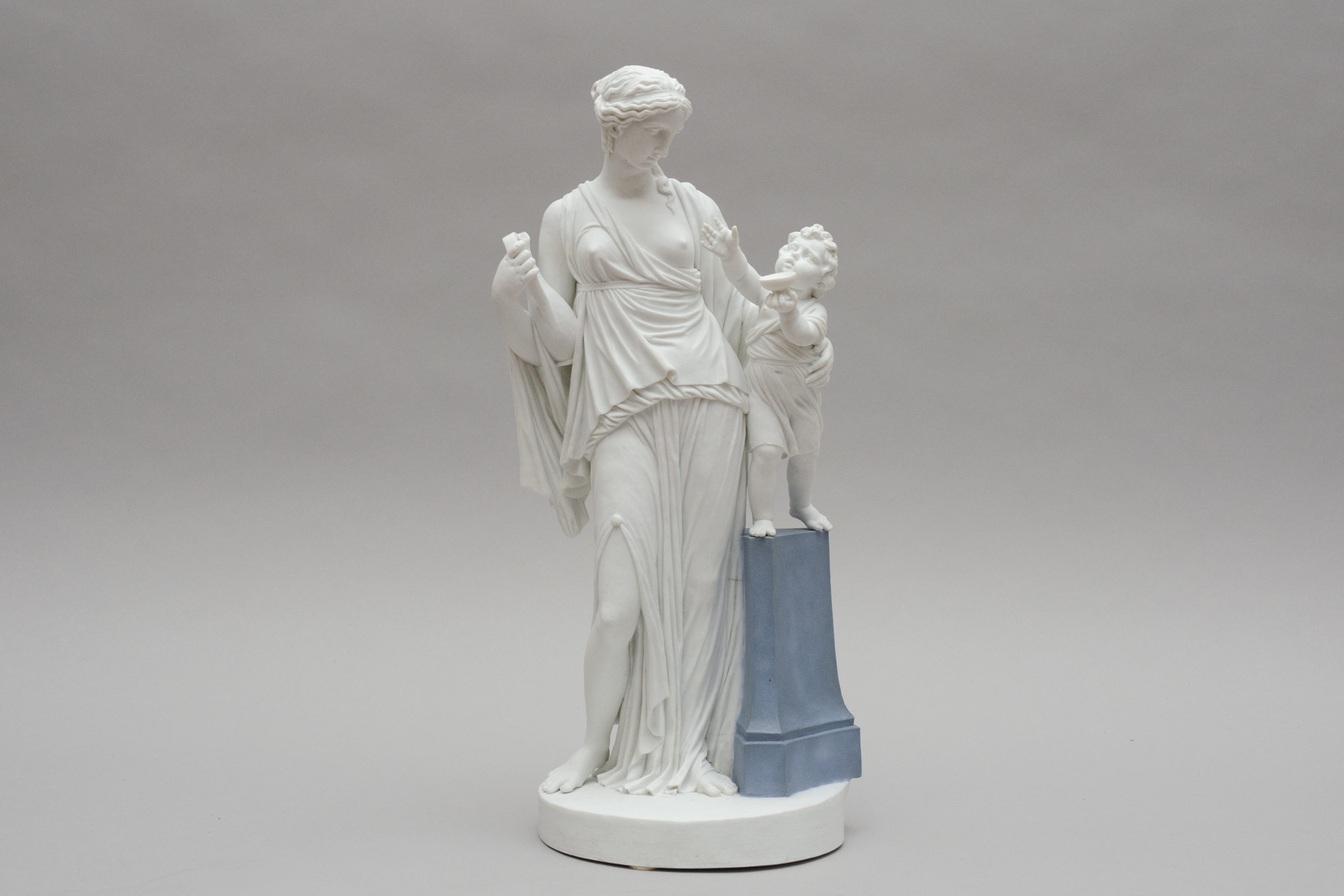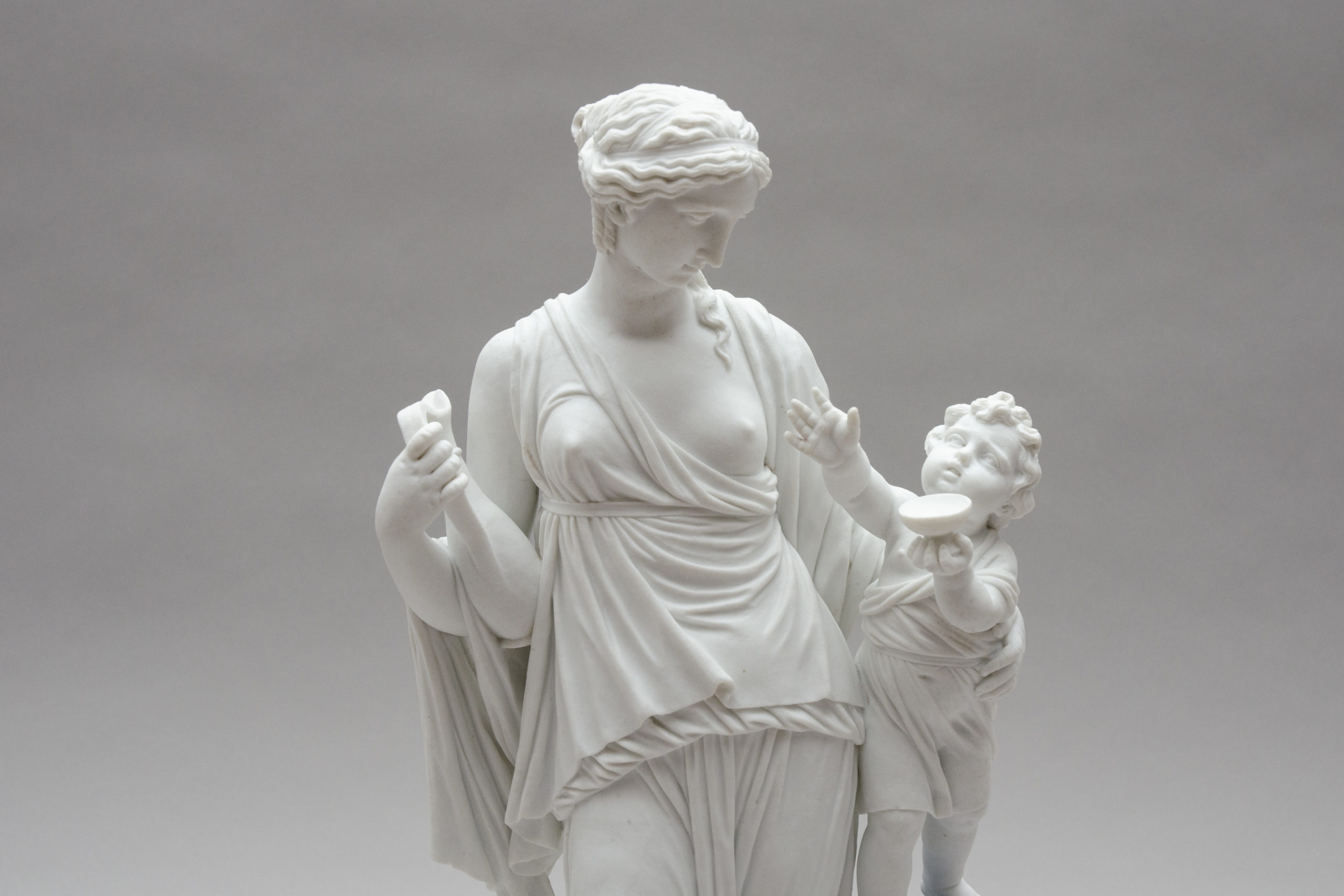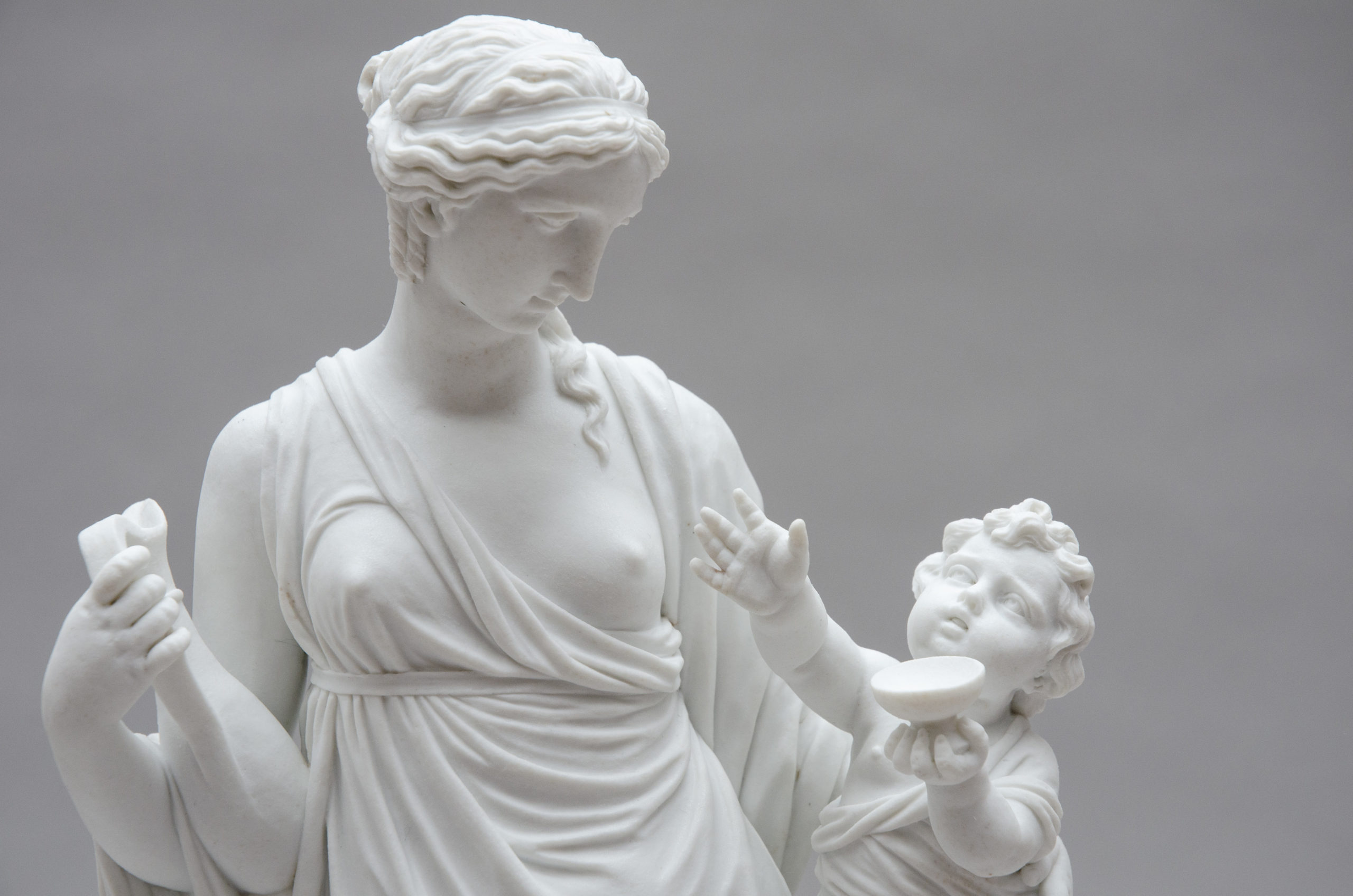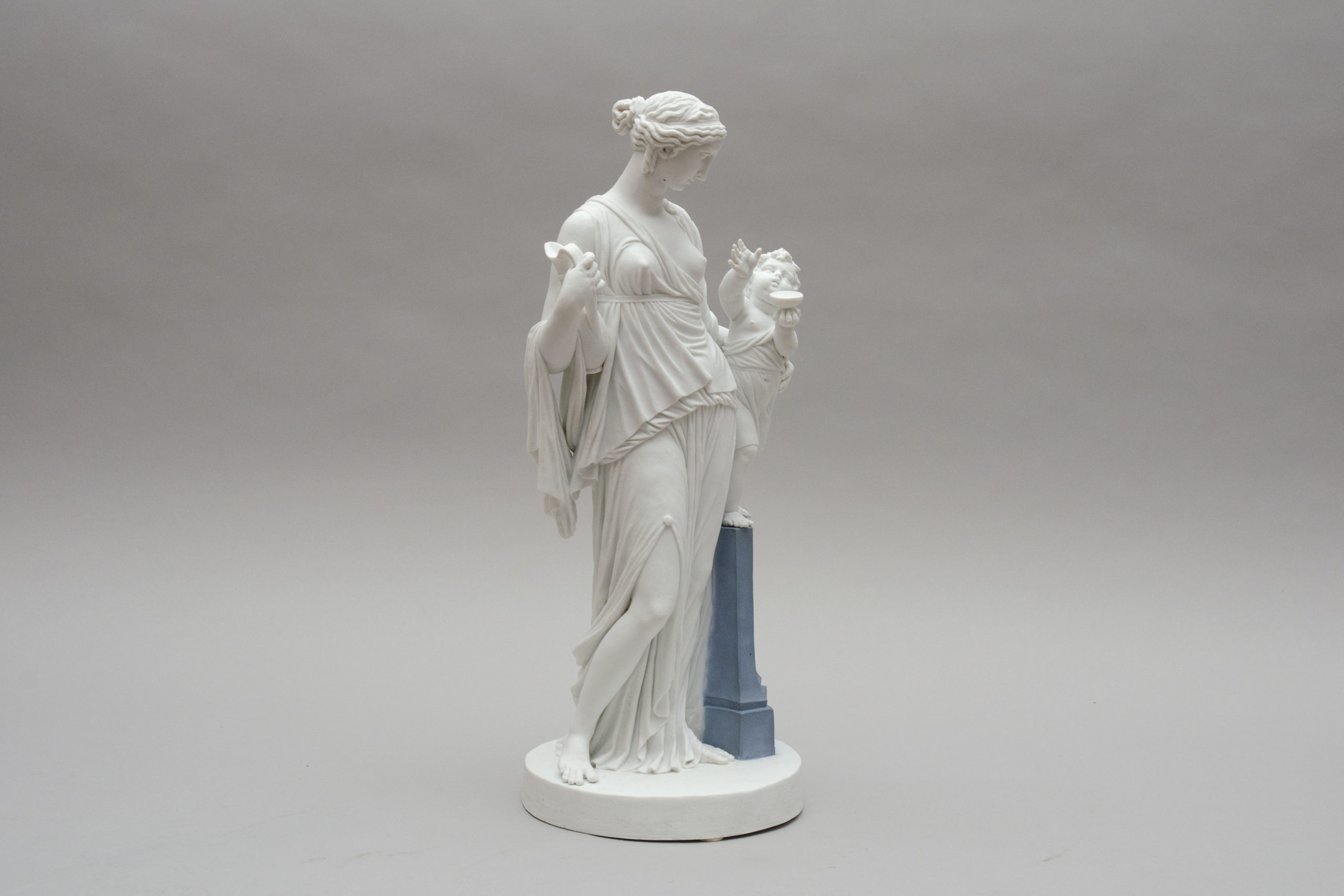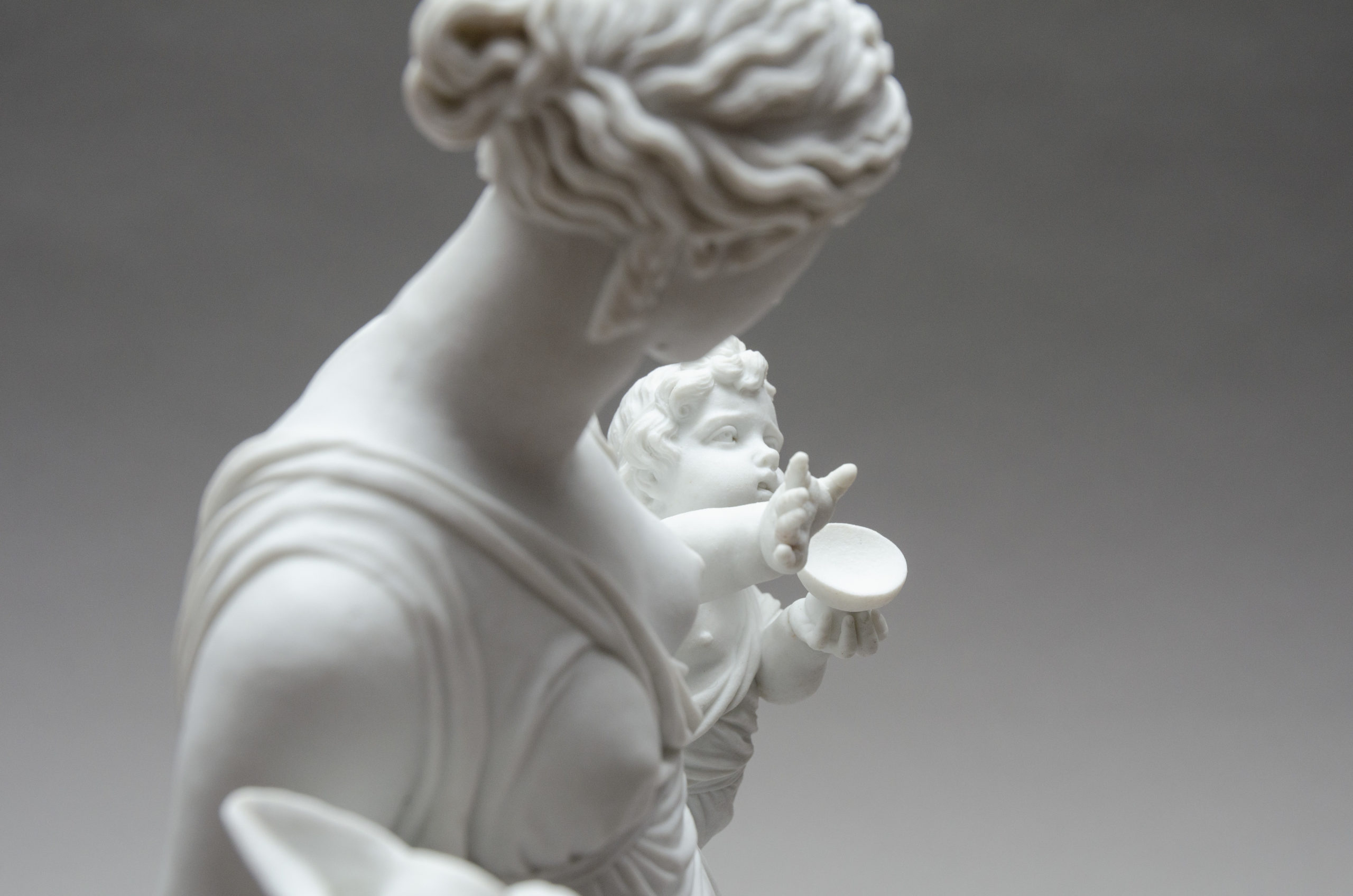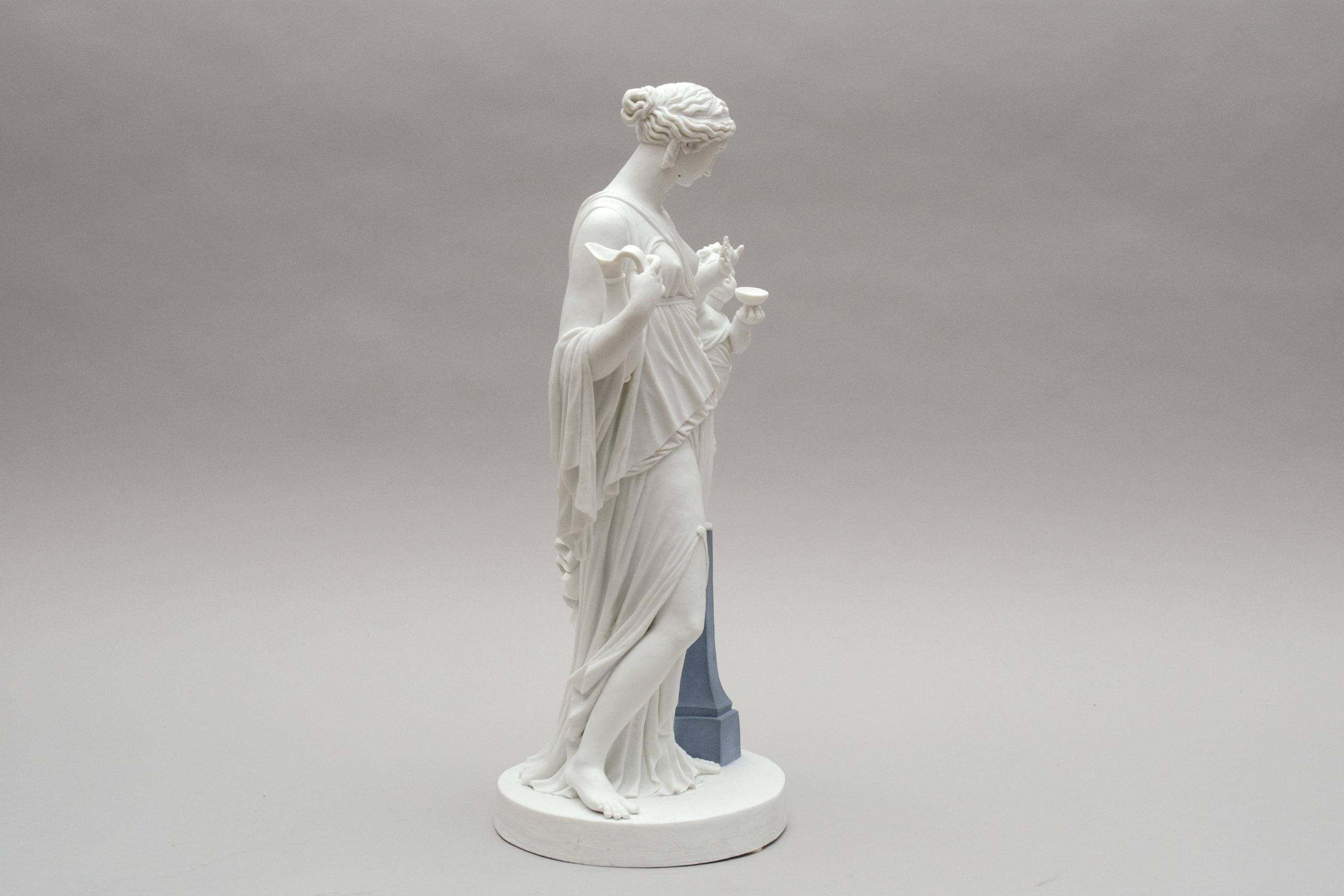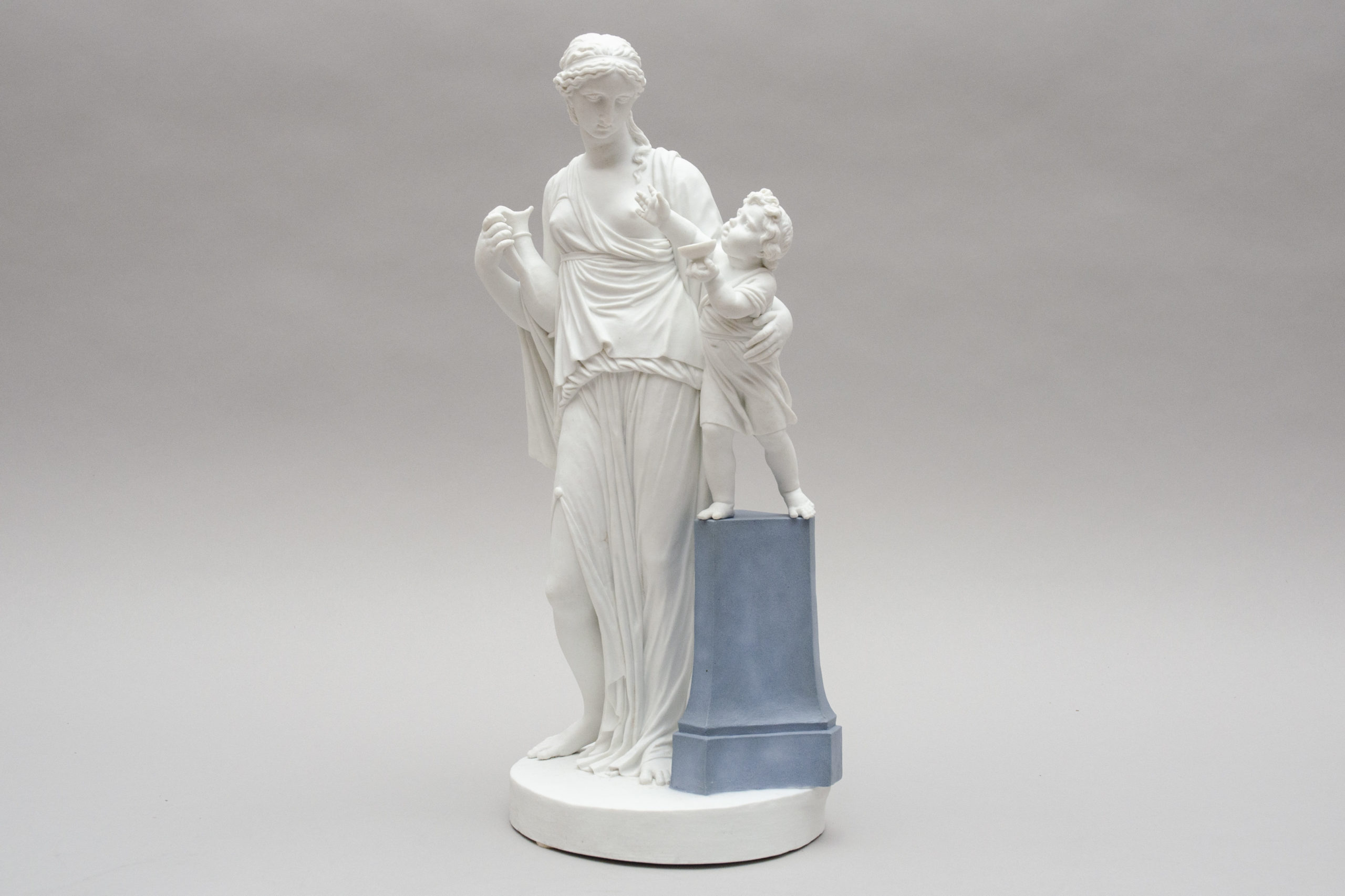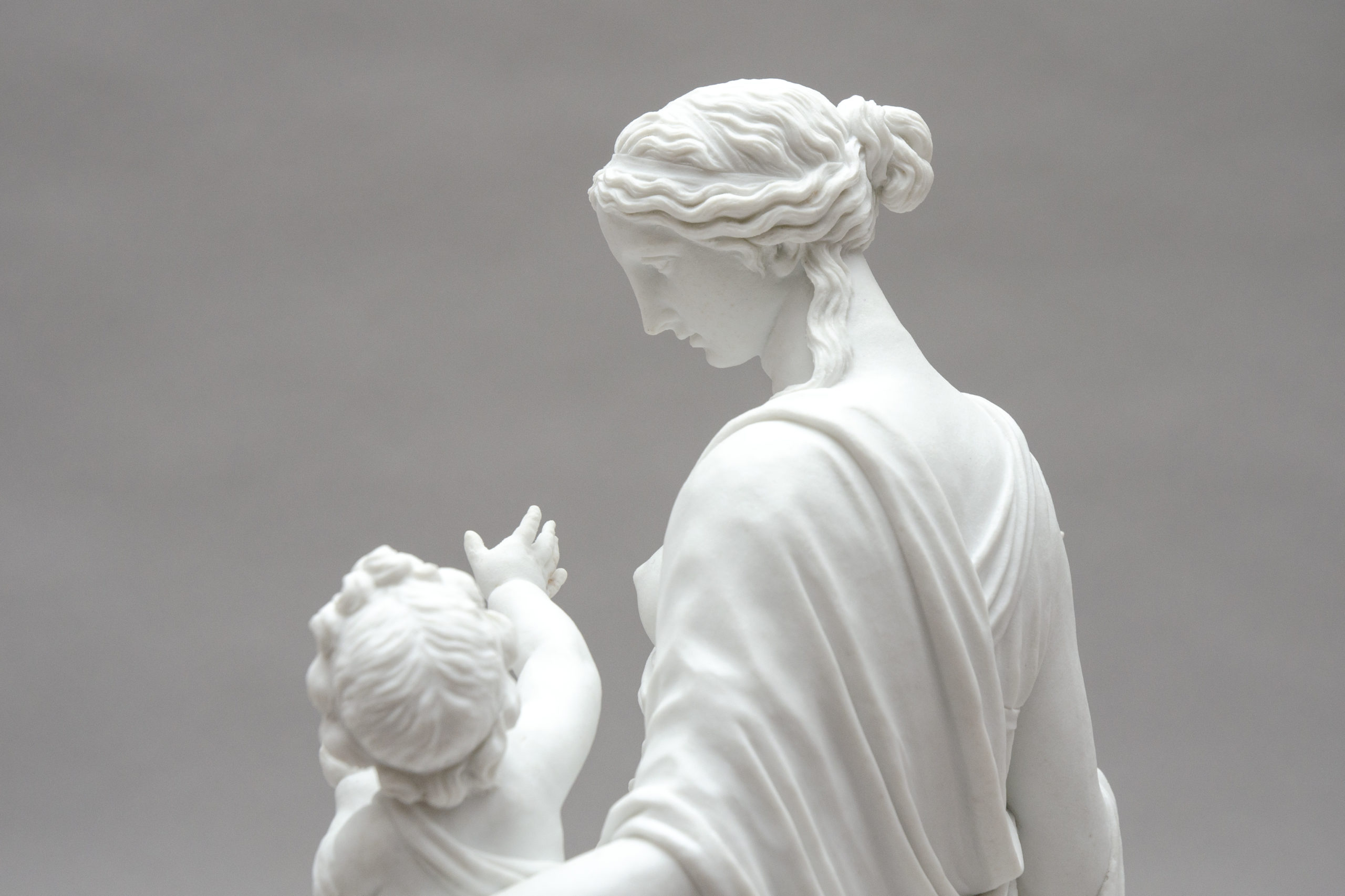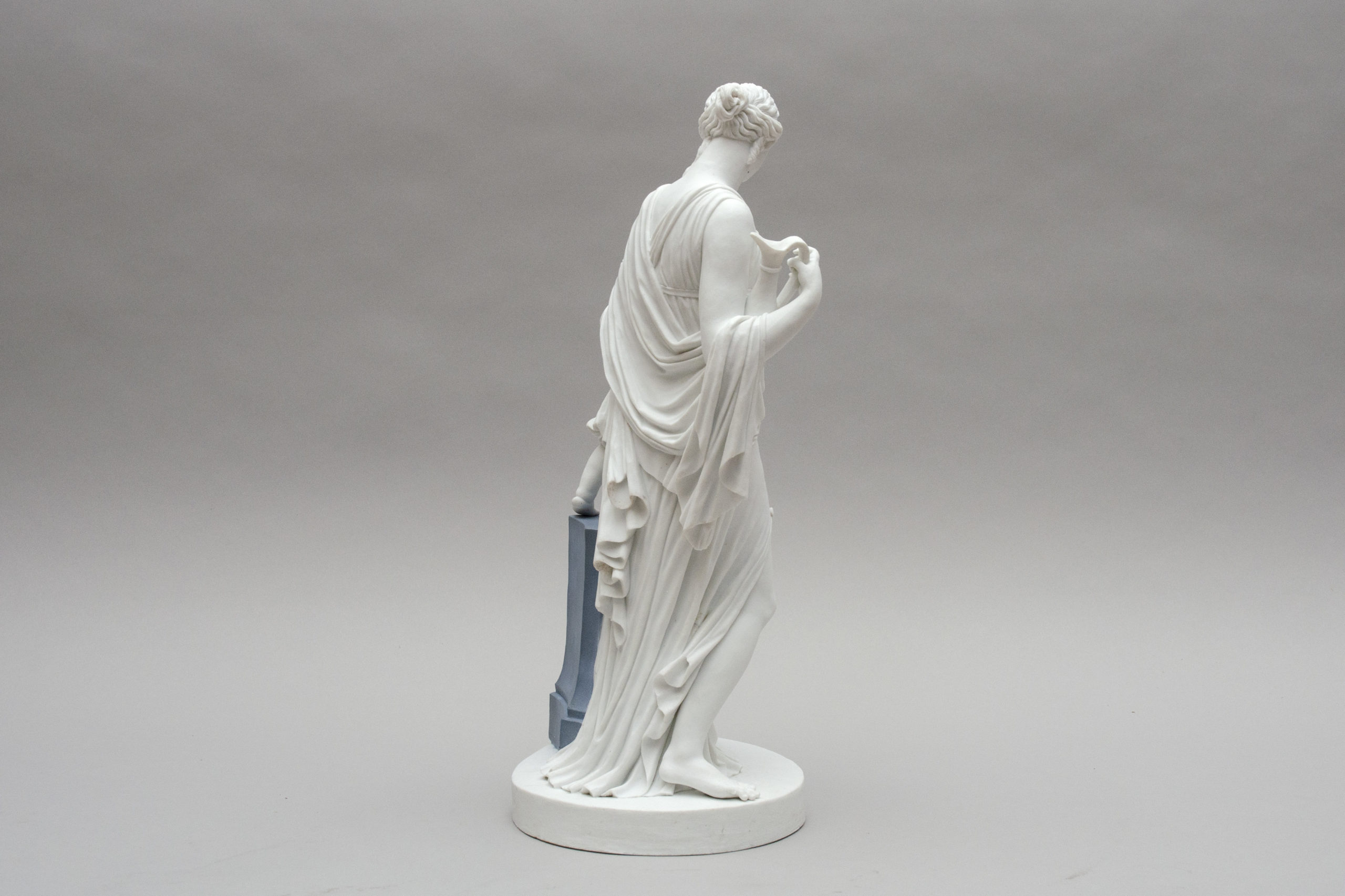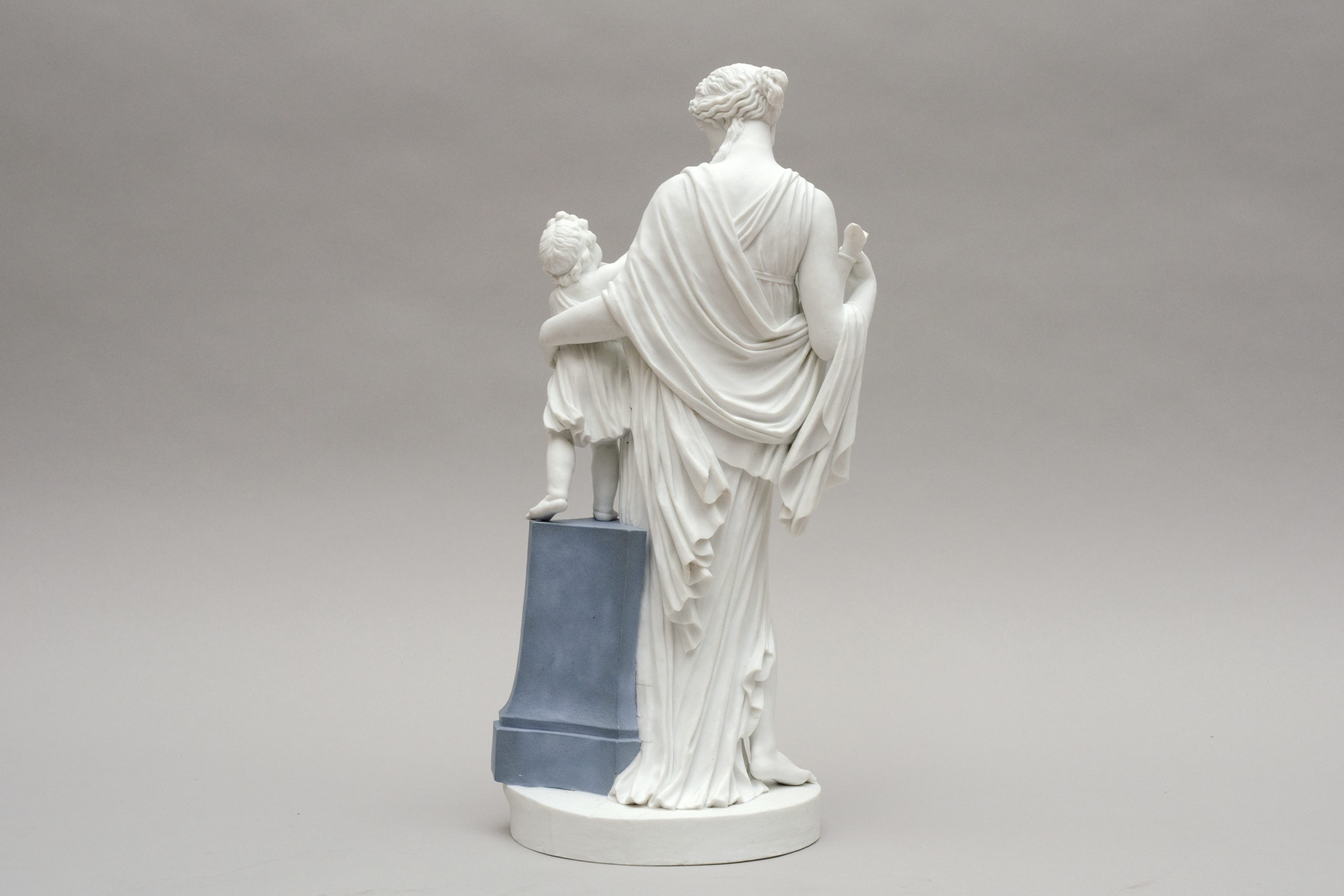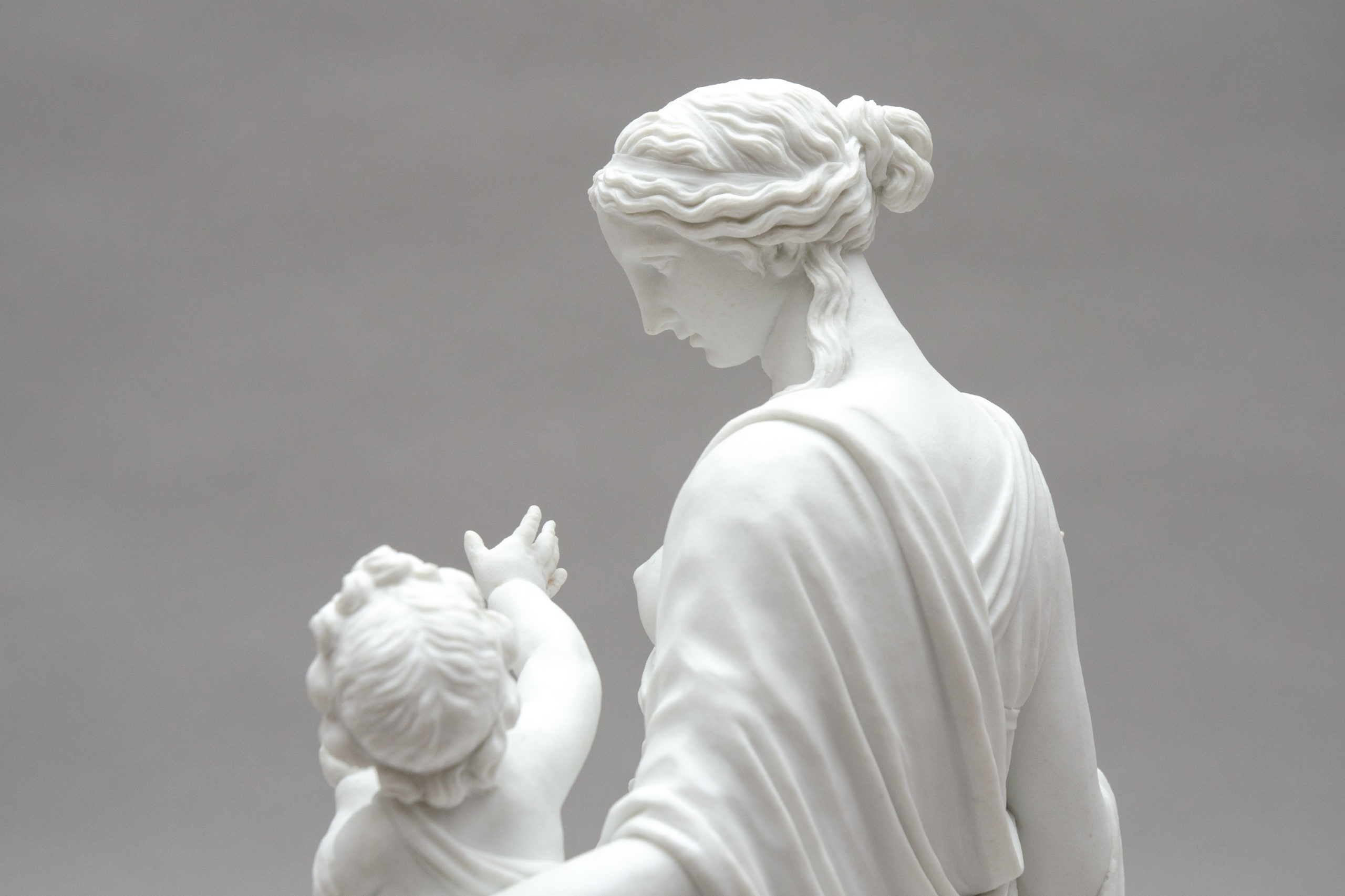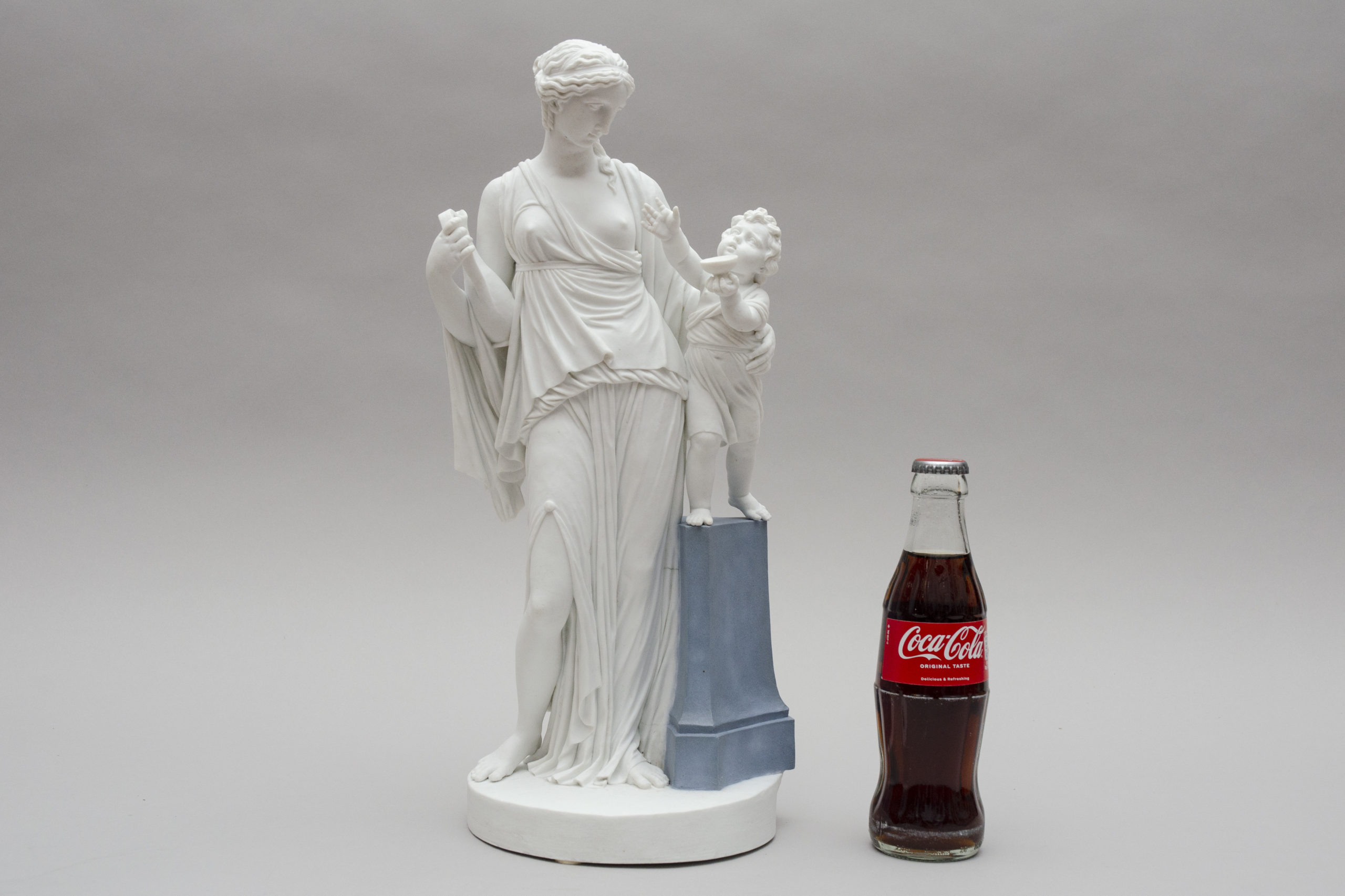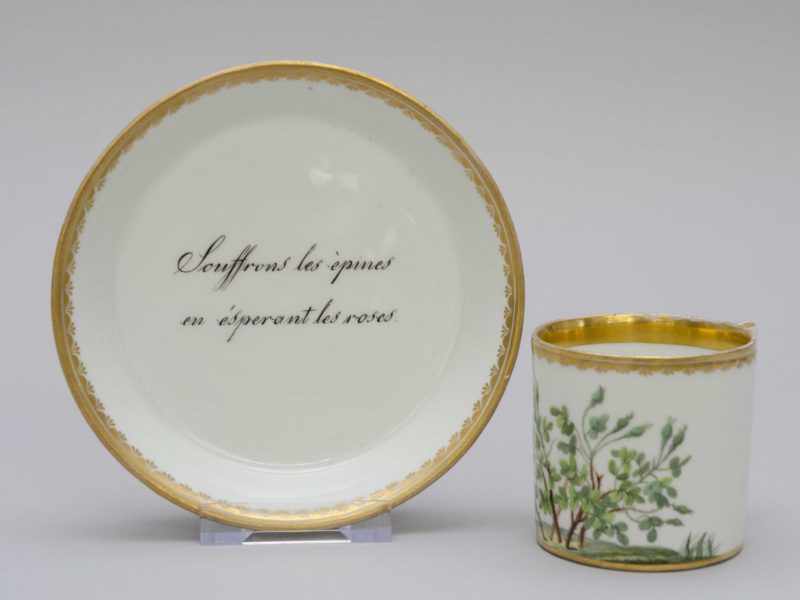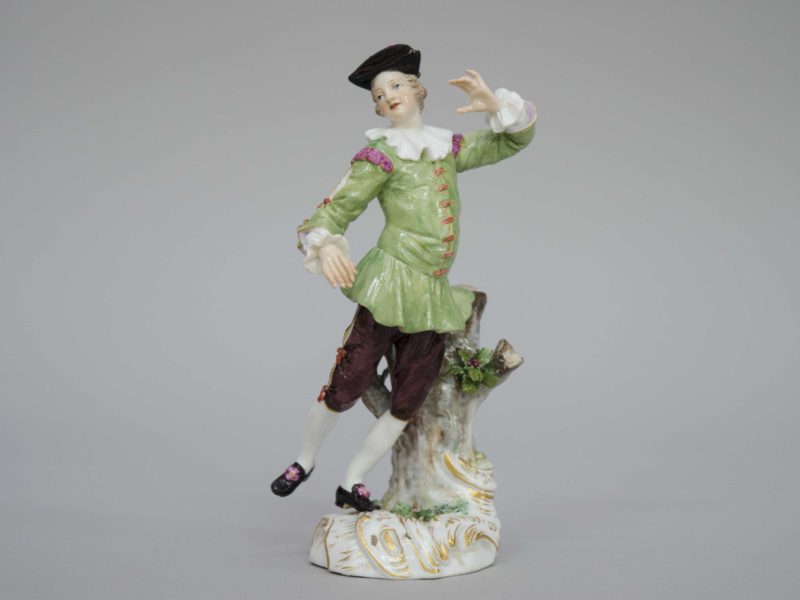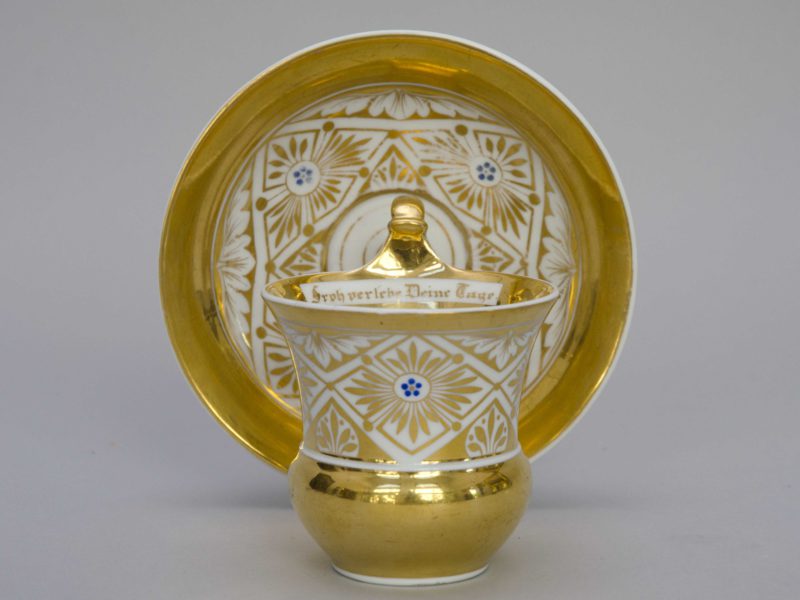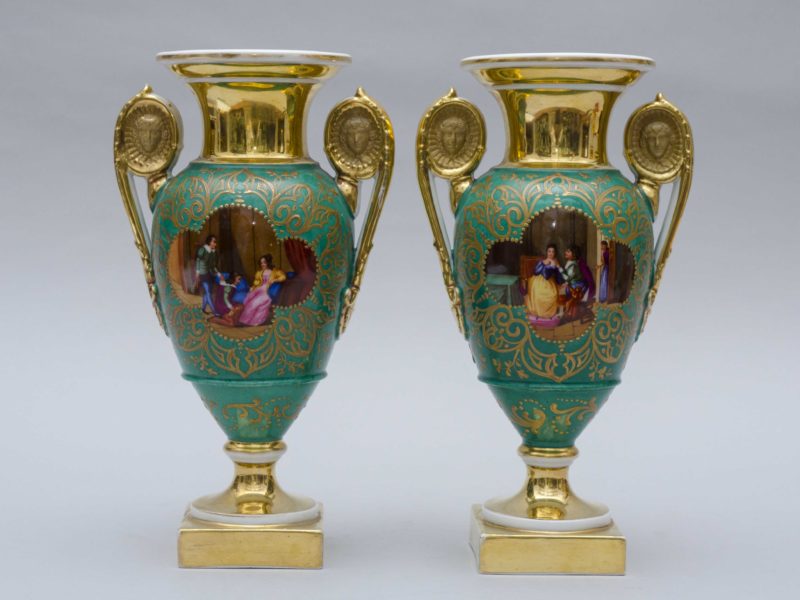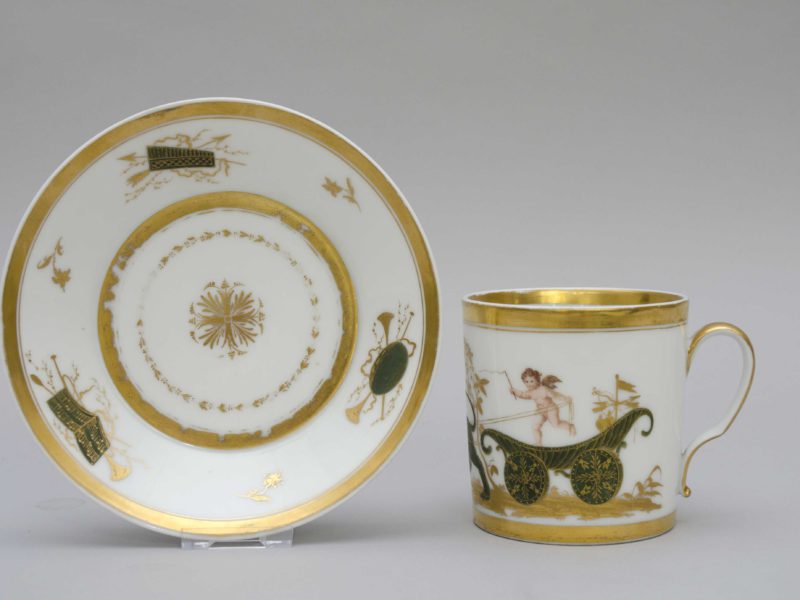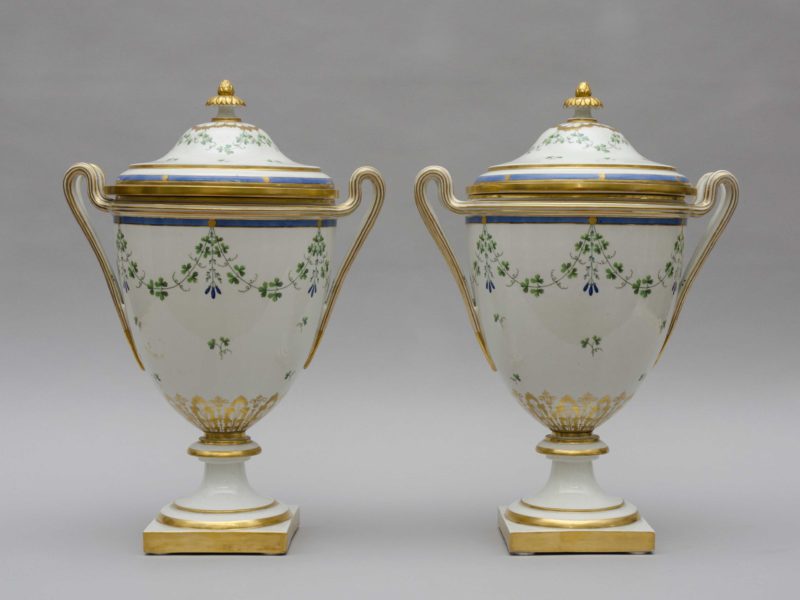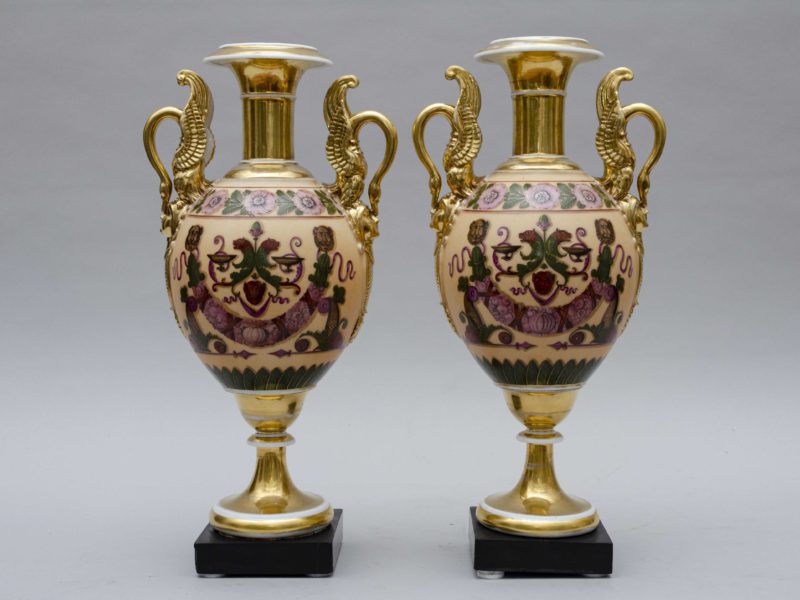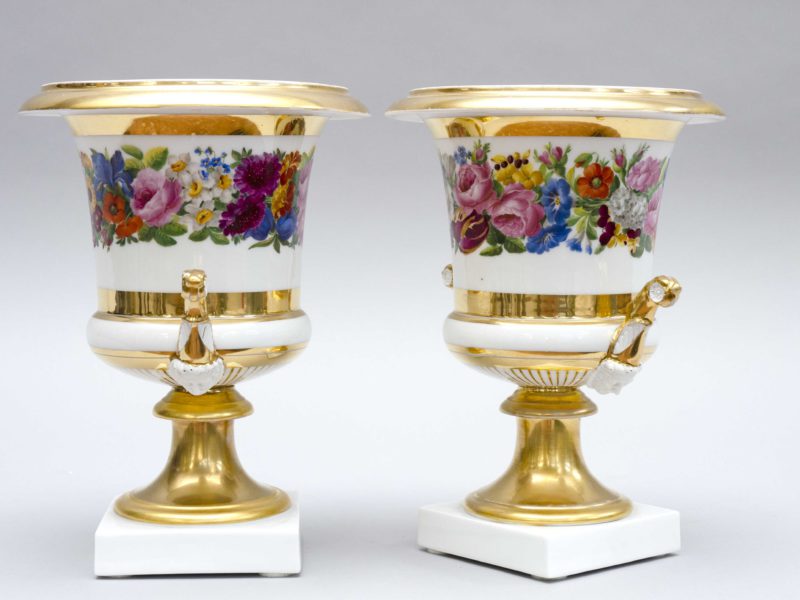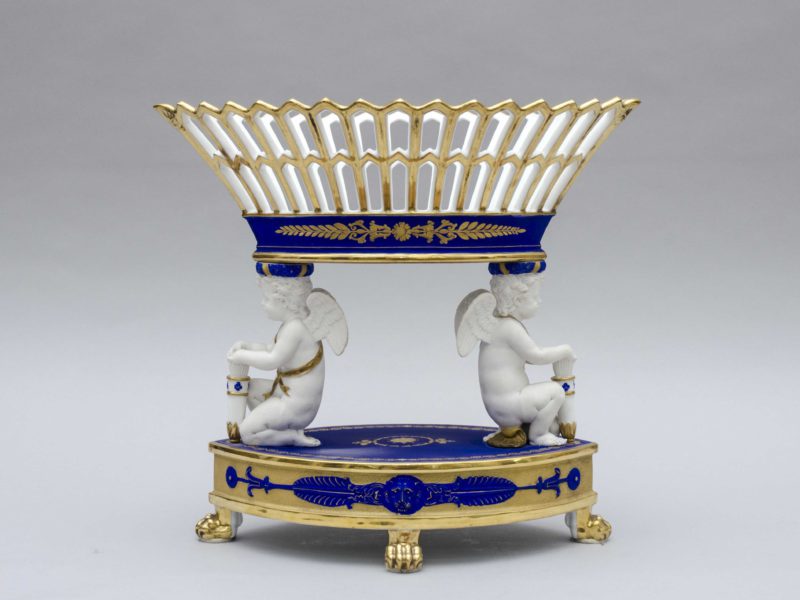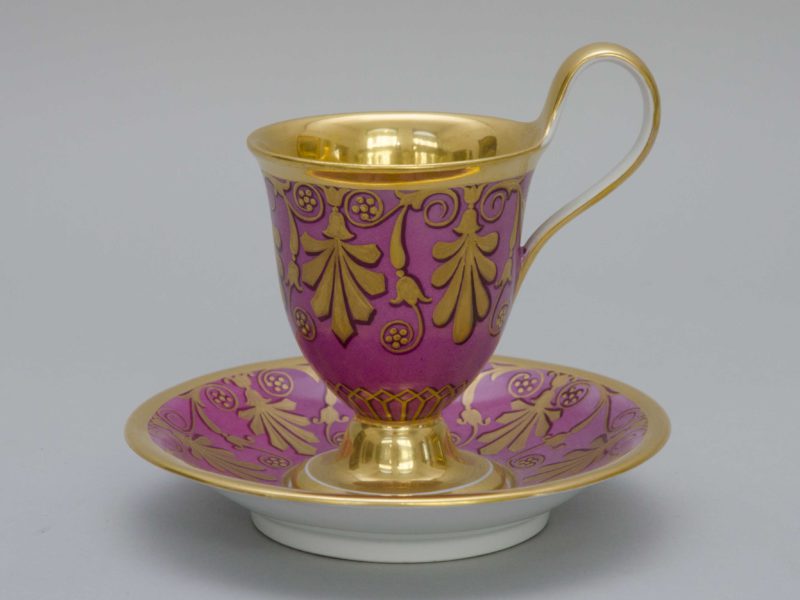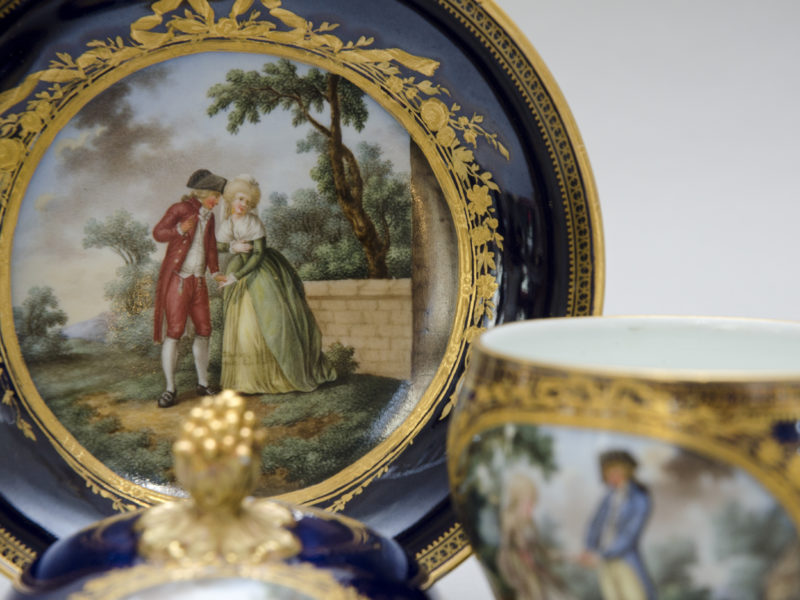
Large bisque group “Hebe”, attributed to Nast in Paris
2.900€
In stock
Beautiful large groupe of the goddess Hebe and a child. Hebe was the goddess of youth and the cupbearer of the gods who served ambrosia at the heavenly feast. The child holds a tazza while standing on a bleu pedestal in the manner of Wedgewood. Wonderful drapery dress in the antique style on the goddess’s body. No marks. Attributed to the Nast manufactory in Paris for the quality of the white and the bleu color.
Size: H 40 cm x diameter base 16cm
Attributed to the Nast manufactory, circa 1800.
Lit: Jean Nepomuceno Hermann Nast was born in 1754 in Austria. Arrived in Paris at the age of 20, he was hired by the Vincennes manufactory in 1780 and learned the craft of porcelain.
In 1783, he took over the small pottery of rue de Popincourt (founded by Lemaire in 1780). Designer, turner, moulder, burner and decorator, Nast knew how to do everything! In 1787 he moved his establishment rue des Amandiers (currently No. 70 Rue du Chemin Vert). Nast enjoys famousness deserved by his talent. Always striving to improve the quality of his works, the decorations are neat, the golds are of high quality and the bisque are very white and even white on blue in the imitation of Wedgwood at the end of the 18th century. When his wife died in 1811, he involved his sons, Henri and François, to his work. When he died in 1817, he left a prosperous factory to his sons. In 1819, the Nast manufactory won a gold medal for large vases (1,5m!) decorated with bas-relief, a clock and bisque columns. The same happened in 1823, 1827 and 1834. After 50 years of existence, the factory will be dissolved in 1835.
In stock
Contact us